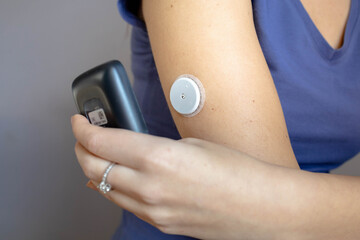Cupping Therapy for Nurses: Understanding Its Role in Modern Healthcare
As nurses and healthcare practitioners seek integrative approaches to pain management and patient wellness, cupping therapy is gaining traction as a valuable, non-invasive tool. This ancient technique, which traces its roots back to traditional Chinese and Middle Eastern medicine, has evolved with modern applications and is increasingly being used in clinical, orthopedic, spa, and rehabilitation settings.
What Is Cupping Therapy?
Cupping is a manual therapy technique that uses suction to lift skin, fascia, and muscle tissue. Practitioners place cups—typically made of glass, silicone, or plastic—on the skin to create a vacuum seal. This negative pressure draws blood to the surface and stimulates circulation in the targeted area.
Cupping can be static (where cups are left in place for several minutes) or dynamic (where cups are moved across the skin). In both forms, it promotes relaxation and healing while targeting deep tissue tension and stagnation.
Therapeutic Benefits of Cupping
For healthcare professionals and nurses looking to offer more holistic care, cupping offers a range of therapeutic benefits:
- Pain Relief: Cupping is commonly used to manage musculoskeletal pain, including back, shoulder, and neck pain. It can help reduce inflammation and release trigger points.
- Improved Circulation: By stimulating blood flow, cupping promotes the delivery of oxygen and nutrients to tissues and enhances lymphatic drainage.
- Myofascial Release: The suction effect gently separates layers of tissue, improving range of motion and reducing adhesions in the fascia.
- Stress Reduction: Many patients report a sense of deep relaxation and reduced anxiety following cupping therapy.
- Detoxification: Cupping may aid the body in releasing toxins through improved circulation and lymphatic flow.
Contraindications and Precautions
While cupping is generally safe when performed by a trained professional, certain conditions require caution or are contraindicated entirely:
- Contraindications:
- Open wounds or inflamed skin
- Deep vein thrombosis
- Hemophilia or bleeding disorders
- Severe edema or congestive heart failure
- Cancerous tumors at or near the treatment site
- Use with Caution:
- Patients on blood thinners
- Pregnant individuals (especially over the abdomen or lower back)
- Patients with fragile or sensitive skin
Nurses and healthcare providers should always complete a thorough assessment and obtain informed consent prior to using cupping in a clinical setting.
How Nurses Can Use Cupping Therapy
Cupping can be integrated into various treatment plans, especially in pain management, rehabilitation, sports medicine, oncology support care, and even stress-related disorders. Nurses working in outpatient rehabilitation, hospice, wellness centers, and even bedside hospital care may find it useful—when within their scope of practice and with proper training.
Becoming educated and certified in cupping not only enhances your clinical toolbox but also allows you to offer a personalized, evidence-informed approach to patient care.
Online Cupping Courses from Pedagogy Education
Pedagogy Education offers a diverse selection of cupping courses tailored to healthcare professionals at all levels. These online courses provide the flexibility and convenience that busy nurses need:
- Remedial Cupping: How to Integrate Cupping with Massage: Learn how to combine massage therapy techniques with remedial cupping to enhance clinical outcomes.
- Cupping for the Modern Practitioner: A contemporary look at cupping techniques and protocols suitable for today’s healthcare environment.
- Spa Cupping Foundation Course: Explore cupping in the spa and wellness context with this foundational course, ideal for holistic care environments.
- Orthopedic Cupping: Lower Limb Injuries: Focuses on using cupping to support rehabilitation and recovery of lower limb injuries, including sports-related conditions.
- Clinical Vacuum Cupping: Delve into the clinical applications of vacuum cupping with a focus on safety, hygiene, and therapeutic technique.
Why Choose Online Learning?
With Pedagogy Education’s online courses, you can:
- Learn at your own pace
- Earn contact hours where applicable
- Access high-quality, evidence-based content
- Expand your therapeutic skill set without disrupting your work schedule
Integrating cupping into your nursing practice can offer new dimensions of care, especially for patients seeking non-pharmacological pain relief and tissue recovery. Begin your journey into therapeutic cupping today with one of Pedagogy Education’s expertly designed courses.

